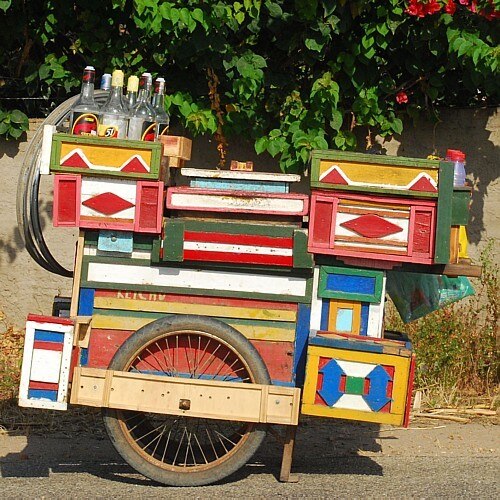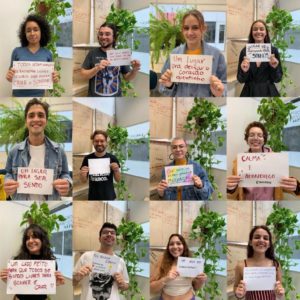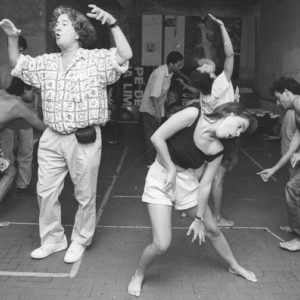
Abstract: Designs of the Oppressed builds upon the work of Paulo Freire, Augusto Boal, and Álvaro Vieira Pinto. These authors devised a critical view of being in the world as an existential project that can be oppressed or liberating. The oppressed project depends on exogenous existential projects like colonialism, patriarchy, and capitalism that do not allow the oppressed people to recognize their autonomous production of existence. Conversely, the liberating project offers a critical reflexive mirror for the oppressed so that they can realize their past deeds, present alternatives, and future potentials. Designs of the Oppressed aims at turning oppressed projects into liberating projects by recognizing the designs by the oppressed for the oppressed, especially when they are not considered proper designs by the oppressors.
Audio lecture recorded for the online Designs of the Oppressed (2021) course.
Full transcript
Hello, I’m Frederick van Amstel. I speak from the beautiful beach of Guaratuba, South of Brazil. This lecture is about oppression, the main concept Paulo Freire, Augusto Boal, Alvaro Vieira Pinto, Frantz Fanon and other Latin American and Caribean authors have worked upon to build and create an alternative way of fighting capitalism, patriarchy, colonization and all kinds of unequal social relationships in our modern society.
This concept is originally developed by German philosopher Hegel. He analyzed oppression in the master-slave dialectics and came to the conclusion that at some point the oppressed will revolt against the oppressor. This inferiority, the oppressor is all the time making the oppressed feel natural and unavoidable. The oppressed, at some point, notice that this is just one possibility of relating socially to another human being in a social group.
Marx has built upon the master-slave dialectics to analyze the relationship between the workers and the capitalists, the proletariat versus the bourgeoisie, and he came to the conclusion that class struggle will inevitably lead to the worker revolution. At some point, workers will understand that they are being exploited in an unfair way. They would take over the means of production, take over the infrastructure of society and lead society to a new future where workers would self-manage their means of production and there would be no capitalists any longer, no privileged person who would have too much power in society like we have today in a capitalist society.
Paulo Freire and other Latin American authors have reflected on the specificities of Latin America, which didn’t have a working class industrial society before the 20th century. We also had a colonial past with this master-slave dialectics ingrained into our culture to the point of still having strong racism after the slavery abolishment. Paulo Freire worked really hard to rethink education as a means to liberate from oppression and developed this concept of education as an existential condition of every human being. Accordingly, you would not need to go to the school, to attend the school formally, to be educated. You would be educated by society all the time, even if you didn’t want to, because being human is being educated.
This is a new way of approaching education where one recognizes that learners, students are always teaching their teachers and teachers can learn — and they are already learning — from the students. But, in an oppressive education system, the teacher thinks he’s superior to the students as they have some knowledge that the students don’t have. They don’t recognize students having knowledge.
Critical pedagogy as proposed by Paulo Freire and other authors who have been building upon his ideas is to let students and teachers engage in a co-joint activity of learning something that none of them knew before. It’s a collective participatory research activity. It’s not just about learning what is already known, but learning something new nobody knows.
Augusto Boal built upon Paulo Freire’s ideas and did something similar in theater. He looked at the origins of theater in collective festivals organized by communities. The actors were not professional actors in this moment. Everybody would act, as a normal part of their lives, like we do every day. For Augusto Boal, theater is also an existential condition of being human. We need to act roles in our social life all the time. Therefore, we are theater.
However, we attend theater school, we attend theater houses and in these places, they would tell us that we are not actors and only those professional actors are capable of properly acting and beautifully acting. So we think we don’t act in a beautiful way because of this oppression that got ingrained into the superstructure of the cultural domain.
By creating Theater of the Oppressed, Augusto Boal created a means for us to use theater in a liberating way and then understand that this oppression has been internalized not just to our minds, but also to our bodies, shaping the way our muscles, our body postures are typically displayed in public society. He has helped many different kinds of oppressed people to recognize that they can act differently than just abiding to oppression. They can react to oppression right away in the situation where oppression is happening. They can strengthen themselves by seeing that they are collectively stronger than the oppressors.
Designs of the oppressed builds upon the work of Boal, Freire and also Alvaro Vieira Pinto, who has an interesting remark about designing or “projeto” in his original wording, meaning to be an existential condition of every human being. Human beings need to design their means of existence. They need to foresee new situations. They need to devise ideas and transform these ideas into materialized artifacts that would change their existential conditions and push them, in turn, to develop further and become more, as Paulo Freire once said.
However, due to social inequality, some social groups have been able to manage this production of artifacts, the means of production they took over, and also the means of designing the production. So that, in our society most people don’t feel that they can produce their own means of production. They feel like they depend on consuming what has been designed by others.
Designs of the oppressed work first to recognize and help people see themselves as designers. Everybody, but especially those that have been part of socially oppressed groups — whose existential conditions have been denied — are also denied in their design conditions. Whatever they design is considered as amateurish design, vernacular design, or not even any kind of design, just something inferior, uninteresting, definetely not the solution of their oppression.
Designers of the oppressed think that strengthening these designs of the oppressed and developing new ways of design which are more powerful, stronger to fight oppression, right from what is already there, right from the existential condition of the oppressed, which is somehow ingrained into any kind of small reaction, any hacking, any subversive action against a design that has been imposed on people.
For example, what we call here “gambiarra” in Brazil. This a kind of design of the oppressed, though most of the times an isolated effort. If we connect all these different designs of the oppressed, or not all, but at least those that make sense to be connected, they can grow and share knowledge. People who design like that can see themselves as designers, as a community designer, as collective designers, working towards a production of existence that is no longer unequal, that is fair for them, that is perhaps even more democratic. It’s still a work in progress. In the designs of the oppressed course, you will see many different approaches and we welcome you to construct and to build together this notion of designs of the oppressed. Thank you for coming.

